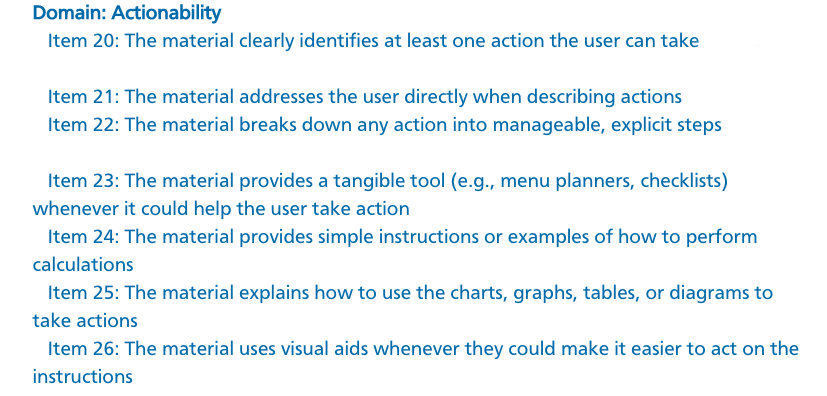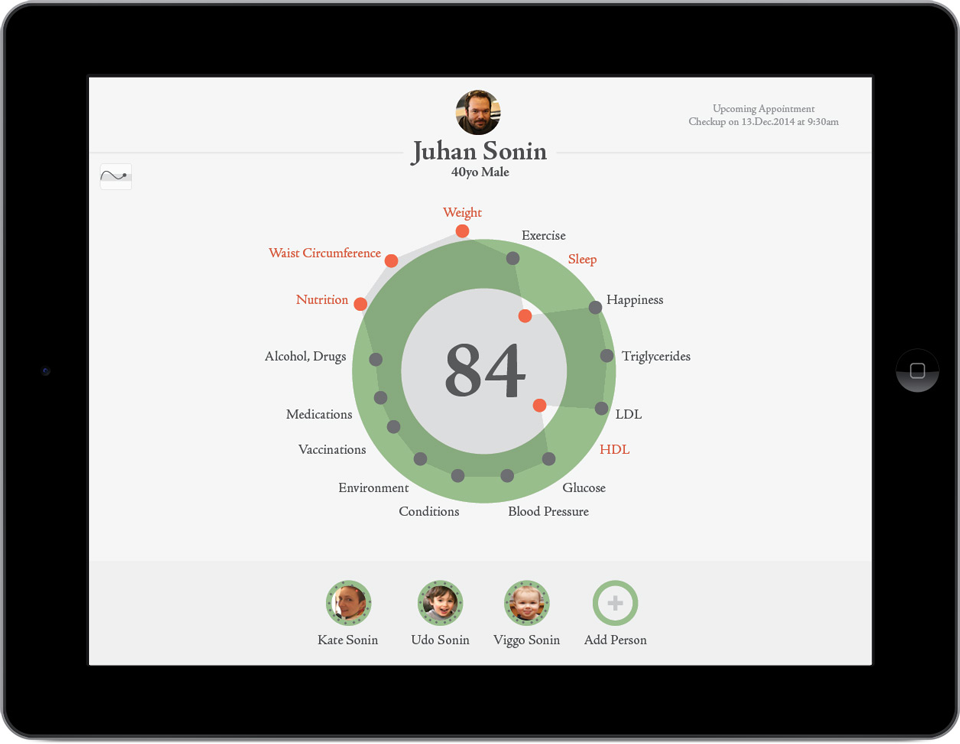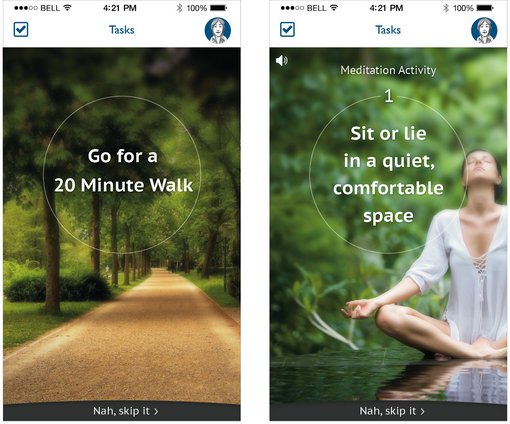This is the second of two articles on the topic of health literacy. The first was Are You Health Literate?
There is health information content (presumably developed by a clinically trained writer) and then there is the presentation of that content—the form in which the user accesses, consumes, and acts on or responds to that content. This brief overview will focus on the intersection of design for user experience and health literacy.
Let’s look at the definition of health literacy again:
Health literacy is the degree to which individuals have the capacity to obtain, process, and understand basic health information and services needed to make appropriate health decisions.
This definition poses several fundamental design questions:
- Access—How does the user obtain the information? What technology is involved? Will accomodations be required for sensory impairment, physical challenges, language barriers, etc.?
- Process—Can the user access the information repeatedly? Can the user ask questions or request additional information? What learning supports should be employed? (Supports include devices like educational video with audio narration + captions, illustrations, interactive diagrams, mnemonics, reminders, etc.)
- Understand—What design elements support user comprehension? How is learning measured? How will the user indicate a specific level of understanding, and what level(s) of understanding are necessary? For example, “informed consent” can have legal implications, while “informed enough to ask a question” is a less formal measure.
Design strategies that answer such questions involve more than the human factors principles typically associated with user experience. Along with navigation, controls, layout, responsive design and the myriad other elements and patterns that underlie an elegant, usable interface, there are additional layers of information and instructional design to consider.
Who’s Your User?
Knowing your target audience is especially important because of the broad range of characteristics and abilities that you may have to accomodate with your design. For example, the U.S. Department of Health and Human Services Quick Guide to Health Literacy recommends that health information designers keep the following attributes in mind.
| Epidemiology | Language and literacy skills |
| Demographics | Communication capacities/limitations |
| Behavior | Access to services |
| Culture | Life experiences |
| Attitude | Social and cultural diversity |
| Age | Economic contexts |
Each of these user attributes can present a number of challenges. For example, if your audience includes a widely distributed rural population, users may not have access to high-speed Internet connectivity, which means performance is going to be a potential issue.

Streaming multimedia content may not be viable for this population. How will you offer content in an accessible, consumable way that still achieves the health literacy objectives?Source: Oklahoma Farm Report
What Is the User Expected to Do?
In Using Design Principles to Foster Understanding of Complex Health Concepts in Consumer Informatics Tools researchers explained an important distinction between informational material and content that elicits or requires some action on the part of the user.
“Decision aids differ from information aids in that they contain elements that elicit patient input and help the patient to clarify their values in an effort to support their decision. While information aids require that the patient comprehend a set of facts, decision aids require that the patient understand and interpret the information, and weigh benefits and risks together with personal values in making a health decision. Thus, it is especially critical in decision aids that information is communicated effectively to support comprehension across literacy levels, which is a prerequisite for the higher level of learning that involves using the information to make a decision.”
When designing for patient understanding and decision support, it helps to understand the cognitive science behind the “higher level of learning” noted above. There is a logical workflow, potentially increasing in complexity, involved. The user must grasp and interpret the information and consider risks against benefits in light of his/her personal priorities in order to make a decision. Each of these concepts: information, risk, benefit, even personal attitudes toward behavior change, must be clearly understood in some measurable way. Here is an example of some instructional elements that help learners to act on the information.

Source: The Patient Education Materials Assessment Tool (PEMAT) and User’s Guide: An Instrument To Assess the Understandability and Actionability of Print and Audiovisual Patient Education Materials. October 2013. Agency for Healthcare Research and Quality, Rockville, MD.
Accomodating Learners
You may feel like you are walking a tightrope when designing accessible, action-oriented health information tools for a broad learning audience. In addition to the characteristics listed above you may also encounter requirements for accessibility and 508 compliance. (This somewhat dated article offers an easy-to-understand overview of these two related topics.)

Involution’s hGraph can track individuals’ data across generations, displaying behavioral and medical trends in families.

Design for health literacy and patient education is intended to help people change a specific behavior such as taking medication, quitting smoking, lowering cholesterol, or reducing stress. Design (and content) that align closely with an actionable goal and use personalized information have the greatest impact on behavior change.
Possibly the most important goal of design for health literacy is to make it patient-centered. People are expected to make many more decisions about their own healthcare than ever before, and often without a clinician present. However, this does not mean that the purpose of your design efforts is to replace the clinician. Rather, you are likely engaged in a collaborative effort to build out an important component of a healthcare ecosystem, helping lead to better patient outcomes.